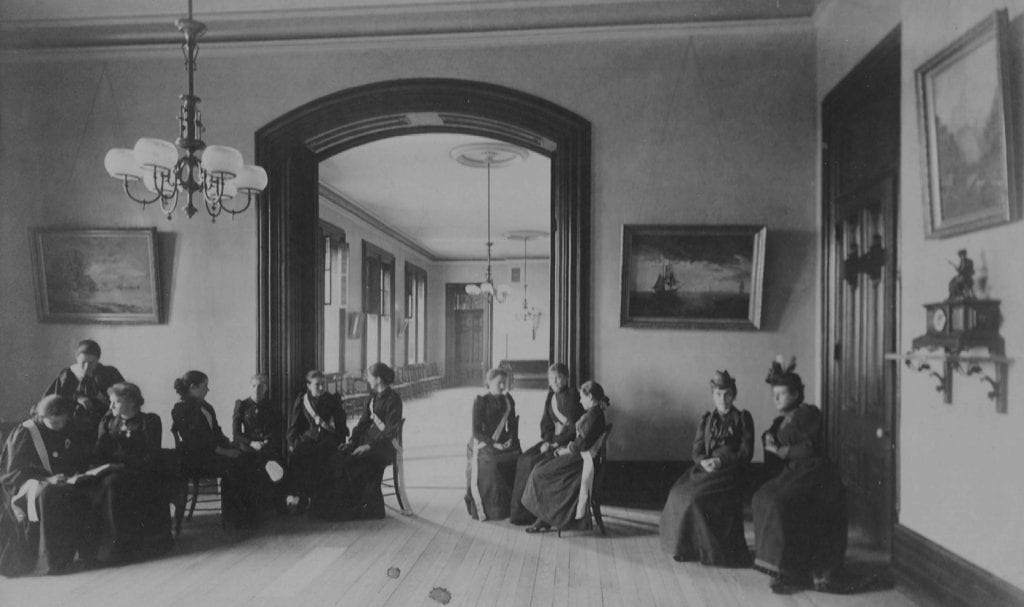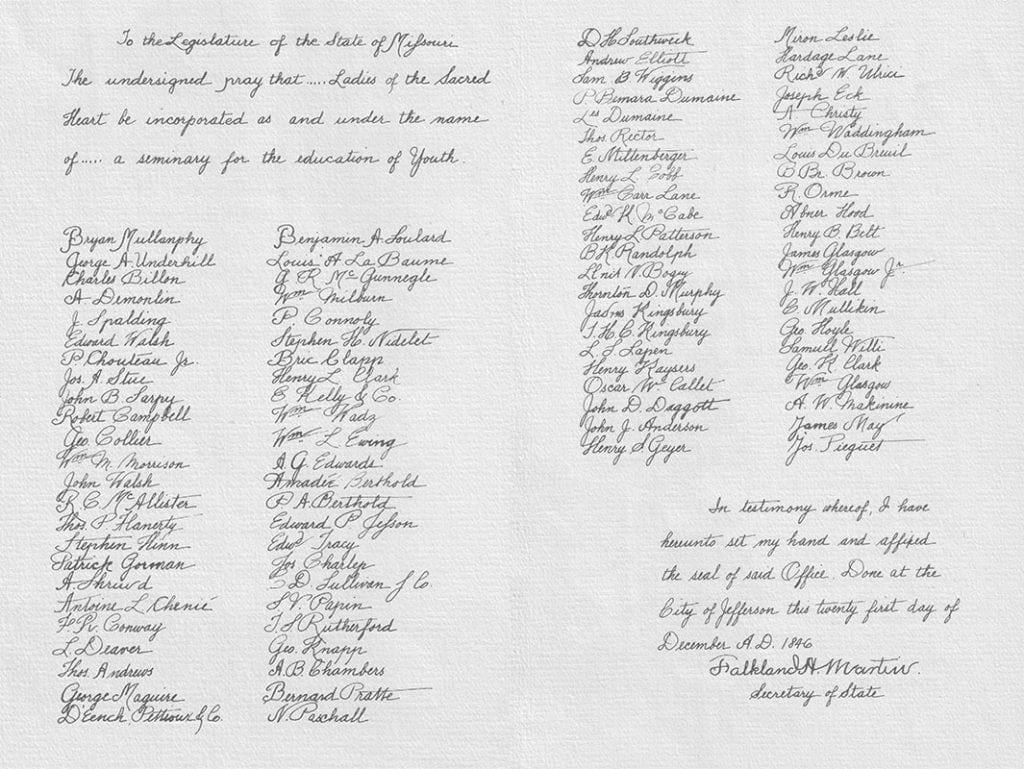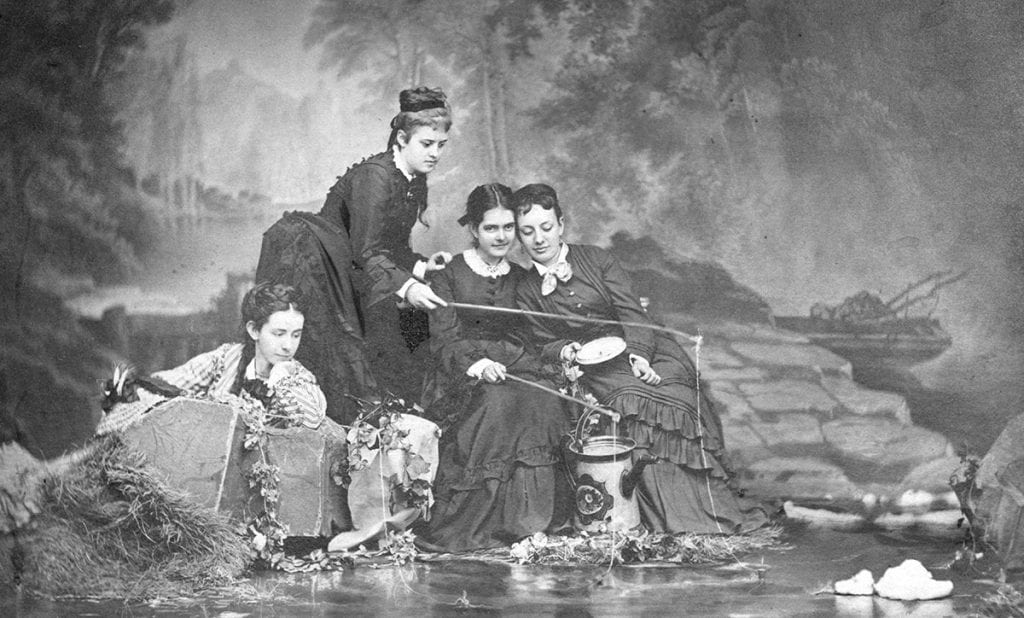From Academy to College

The Religious of the Sacred Heart followed a path that, while long and winding, remained centered on a core set of values.
Philippine Duchesne did not stop after establishing the first school in St. Charles. She established a second in nearby Florissant, Mo., which grew and flourished. Her third school, established at Broadway and Convent streets in the city of St. Louis, became incorporated as “The Female Academy of the Sacred Heart” in 1846.

The growth of St. Louis necessitated another move in 1864. And 21 acres of property (Withnell’s Grove) were purchased for the Academy at the corner of Meramec and Nebraska streets in what is now the Dutchtown Neighborhood of South St. Louis City for $40,000. After financial difficulties slowed construction, it was finally completed in 1872.
This new “country home,” designed by architect James McNamara, opened on September 5, 1872 with 80 boarding school students. Also part of the new complex was a free school for nearly 70 underprivileged children, and a novitiate for eleven young ladies.
 The following year, 1873, four young women received the first degrees conferred on the Maryville campus.
The following year, 1873, four young women received the first degrees conferred on the Maryville campus.
With its educational roots in France, the school was based on a six-year French Lycee pattern—which included the equivalent of junior college work at the two highest levels. Many French customs prevailed throughout the school, from the celebration of traditional French holidays (“conges”) to the games students played after school hours (a glorified hide and seek known as “cache-cache”) and even the daily snacks, or “gouter.” The French language was taught at all levels, and girls were encouraged to speak it at all times, especially during meals.
School activities included lectures, recitals, concerts and even early “moving pictures.” So complete was the education taught at the Academy, that—by 1900, women who continued their education after leaving the school were receiving college credit for their last two years there. By 1910, enrollment had reached 181, more than double its original.